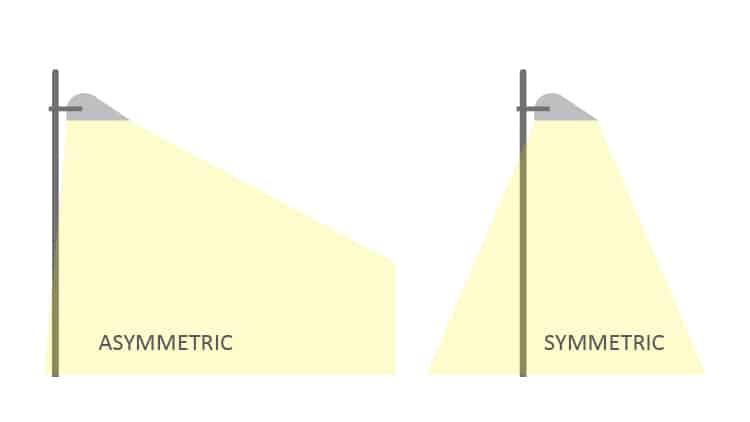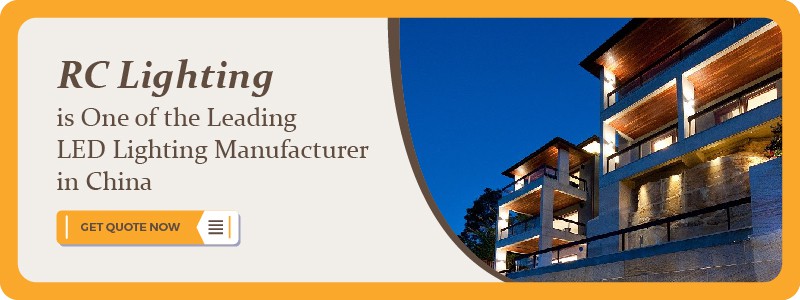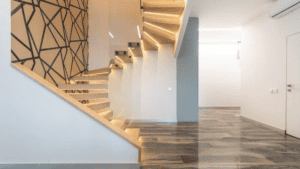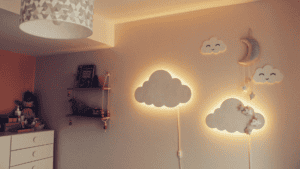If you have come across different types of floodlights, you may notice that a light beam angle is different for every kind of floodlight. To get the optimum lighting effect for various places, you must choose high-performance options. Those places could include sports lighting venues, stadiums, music/movie theaters, roads/streets.
And frankly speaking, asymmetrical and symmetrical light distribution is up for a great debate every time a project involves big areas’ new lighting installations. Keep reading this post to learn more about the advantages and different asymmetric and symmetrical light distribution features.
A Generalized Discussion: Asymmetric Lighting vs Symmetric Lighting (Light Distribution)
When discussing symmetrical light sources, keep in mind that it distributes light evenly in multiple directions. It’s apt for the general lighting design of places like storage facilities and open car parks. Also, it’s practical as accent lighting when performing visual tasks.
Compared to symmetrical lighting, asymmetrical lighting illuminates one direction. For instance, it’s an effective LED lighting option for offices and other workplaces. The main reason is that the light spill from it doesn’t produce direct glare.
Direct glare can cause protracted exposure leading to severe eyestrain in the long run. Light distribution is a significant discussion concerning sports fields, car parks, streets, and workplaces. The light spill at your desk is worthy of notice if you want to ensure a comfortable work routine and wish to avoid any eye strain or damage.
Let’s take a home reading light, for example. When you use a home reading light, it shouldn’t bother the people watching TV in the same room as you. Similarly, people living near a sports field don’t want to stay awake due to unwanted bright light.
What Is Asymmetric Lighting?
It has integrated advanced optics and significantly lowers energy costs. Asymmetrical light and asymmetric fixtures are trendy for their lower indirect glare. Asymmetrical light is more suitable for spaces where you require a transition from light to dark light spaces.
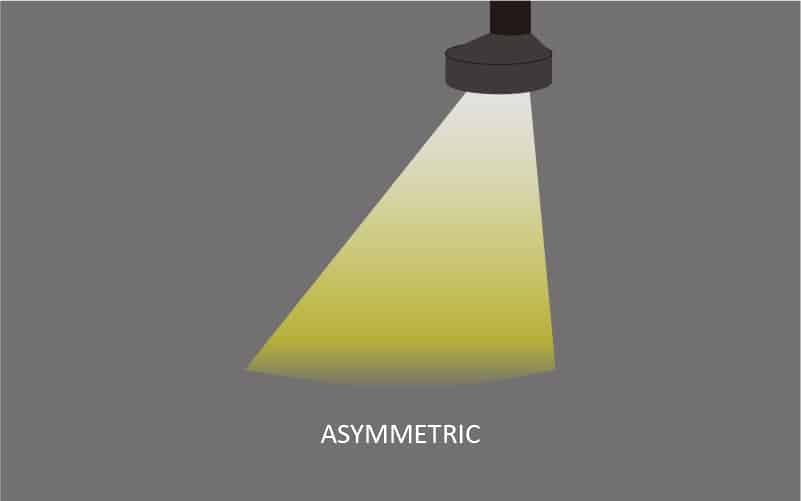
What Is Symmetric Lighting?
As discussed earlier, symmetric lighting refers to a light system that spreads light beams in various directions. It’s recommended for large outdoor spaces and as accent lighting. Symmetric lighting produces both direct and indirect glare.
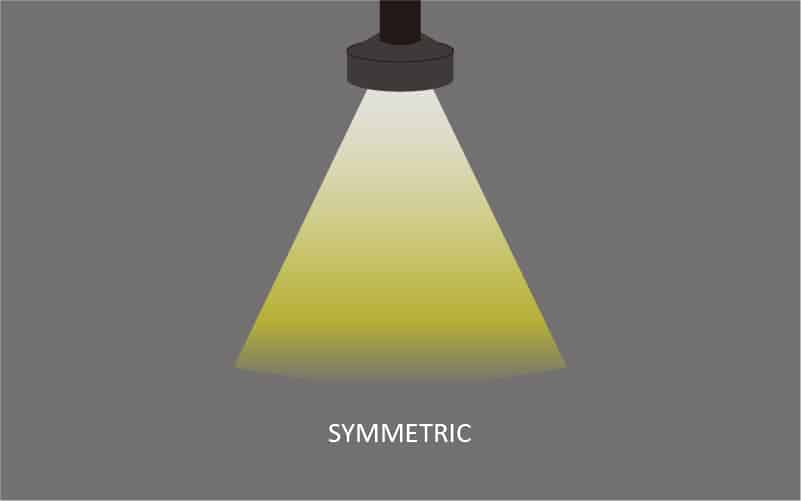
The History of Asymmetrical Lighting
Here’s a brief overview of the history of asymmetrical lighting:
- The first few fixtures were developed during the 1960s
- The main purpose of it during early invention was to equally light up an entire plane
- The first few asymmetric luminaires were installed on illuminate plane’s edges
What are The Advantages of Asymmetric Light Beams?
The term asymmetric light output refers to a simple light system. The light beams are directed sideways to illuminate a specific area. So, here’re a few benefits of such a lighting option:
Lighting a Specific Area
Light fixtures that carry asymmetric direct light beams have integrated advanced optics. It allows direct light beams to pour over a particular area.
Lower Energy Costs
The most common types of asymmetric fixtures include “reflectors,” aka “parabolic.” Since those fixtures reflect light off of mirror surfaces to concentrate the light beam, it helps to lower energy costs similar to traditional fixtures significantly.
Optimal Direct Light Spread (Light Beam Angle)
Light emission doesn’t waste since the light beam is concentrated in a specific direction in a particular area.
Fewer Light Sources
Since the light emission doesn’t go to waste, there’s no need for manufacturers to add additional light sources. The light technology is efficient and eliminates the need for extra lighting.
Where Can I Use Symmetric Light?

It’s not difficult to understand where you can and can’t use symmetric lights. The light reflected from any surface can significantly impact the ongoing activity or purpose, depending on the type of lighting option you choose. So, here’s a small list of where you can and can’t use symmetric light output:
Large Open Spaces
These could be sports fields, streets, and car parks.
Building Sites
Construction sites can’t compromise on installing appropriate lighting options for optimal productivity. Even if a single beam angle is set in an awkward position, it could increase the risk of injuries, financial damage, and more.
Storage Facilities
Storage facilities require thorough direct light output and distribution. Symmetrical light spilled inside a storage facility must illuminate all necessary surfaces and directions.
Open Car Parks
If you’re in a car park, check out the lighting there. It’s most likely going to be symmetrical floodlights.
Conclusion
So, which type of LED lighting is right for you? The answer largely depends on your specific needs. If you need bright, even light and aren’t worried about energy efficiency. Symmetric LED lighting is the way to go. However, asymmetric LED lighting is a better option if you want more control over light distribution and are willing to sacrifice a little brightness for energy savings. No matter your needs, we can help you find the perfect LED lights for your business or home. Contact us and ask for a quote – we promise you won’t be disappointed!

